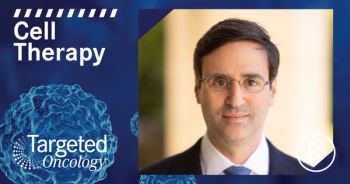
Case 2: Olaparib in BRCA-Mutated Ovarian Cancer
EXPERT PERSPECTIVE VIRTUAL TUMOR BOARD
Robert L. Coleman, MD:So you mentioned olaparib. Maybe you can just, for the audience, kind of run through the data that support that indication?
Shannon N. Westin, MD:Yeah, absolutely. So the indication was based on the SOLO-1 data, which was a randomized controlled trial, a large study, in which they got people to a responsethe majority of the patients had a complete response, and a proportion had a partial response after 6 cycles—and then, within an 8-week time frame, randomized them to either olaparib or placebo. And of course this population was allBRCAmutant, which is important.
The majority of theBRCAmutations were germline, although there was a proportion that had somatic mutations. And so they were treated for just 2 years, and that’s an important point. They stopped treatment at 2 years, and when they presented the data last year at ESMO [European Society for Medical Oncology Congress] and then with the subsequent paper, they demonstrated a clear progression-free survival benefit and a hazard ratio of 0.3. And importantly, this 3-year progression-free survival was 60%, compared with 27% in the population that got placebo. So it does seem that you’re maintaining kind of the slope of the curve or the shape of the curve beyond when they stopped the maintenance therapy at 2 years, which is really exciting.
Robert L. Coleman, MD:Yeah, it’s pretty impressive.
David O’Malley, MD:And it’s interesting that we don’t have that drop-off like we see in the bevacizumab trials, in which you have that significant change in progression-free survival after stopping therapy. It’s really maintained in a nice linear tail.
Susana M. Campos, MD, MPH:Here’s a question for you, because this comes up often. What if this patient came to you a year and a half ago, and this data had not emerged, right? A patient comes to you. You’re 6 months out from finishing chemotherapy. She has aBRCA1mutation. You have SOLO-1 data. You have the approval. Would you start her at that point in time? How much of a gap goes by before you say yes or no?
Robert L. Coleman, MD:I love this question.
Susana M. Campos, MD, MPH:I know, it comes up all the time.
Robert L. Coleman, MD:Love this question.
Susana M. Campos, MD, MPH:We struggle with this.
Robert L. Coleman, MD:I’ll give you my opinion, but let me ask you this first.
Shannon N. Westin, MD:I haven’t. What we don’t know is, do they get a similar amount of benefit later on down the line? It will be interesting to see when the overall survival reads out, because eventually these patients are going to get a PARP [poly (ADP ribose) polymerase inhibitor], at some point. And so the question is, do you get the most bang for your buck up front? I think my gut feeling is maybe you do, but if you’ve got somebody who’s already out 6, 9 months…
Susana M. Campos, MD, MPH:That’s exactly what we’ve done.
Shannon N. Westin, MD:That kind of an image has already been done.
David O’Malley, MD:Well, I think there are a couple of points, 1 of which is: We thought these patients did so well. I would also not start this patient if she came in 18 months later. But we thought these patients did so well. Twenty percent of these patients will be platinum-resistant from the SOLO-1 data. About 10% to 20% are disease-free at 5 years.
Robert L. Coleman, MD:So here are my thoughts on this. I’ve been toying around with this idea in my mind, so I’ve got to put it onto paper. If you look at the curves carefully, 1 of the things you notice is that at about a year out, they start to parallel each other. What that tells me is that in this patient population ofBRCApatients, you know the patients who are left with disease at the end of chemotherapy, whether it’s the second look or not, are essentially looking for something to be treated with in maintenance.
If you think about using a PARP inhibitor in patients with known disease at the completion of therapy, you’re getting a treatment effect. And then when we talk about the next case, which is about a patient with recurrent disease, we know that there is a treatment effect. I think what you’re seeing is that early on there is this treatment effect that is maintained. But you start to lose the ability, or the proportion of patients who are going to ultimately respond. You’ve weeded them out, and essentially everybody then is basically on a natural kind of disease-progress curve. And so, I would say that if you actually look at the slope between these 2 curves, they start to flatten out and be more like each other, probably somewhere between 6 or 9 to 12 months.
David O’Malley, MD:It’s a really interesting thought. We do know that if these patients’ CA 125 [cancer antigen 125] levels start to go up, we’re going to be quick to look to see if there is a PARP option after or before a platinum doublet.
Transcript edited for clarity.








































